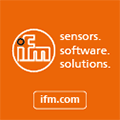
Posted to News on 8th Aug 2013, 14:22
Benefits of cloud-based PLM for machine builders
Colin Watson of Symetri explains how machine builders can benefit from next-generation, cloud-based PLM (product lifecycle management).
Customers may have postponed all but essential investment in capital over the past few years, but they are still under pressure to keep refreshing their product lines and get new ideas to market faster. So, while they may not be in a position to invest in a new production line or fit out a new factory, they are looking for refinements and retrofits to upgrade existing machinery and equipment.
Of course they will expect any upgrade to cost only a fraction of that of a new machine - and rightly so. But suppose the original bill of materials and part numbers have been lost? By the time the designers have re-collated the data, profit margins on the order will be significantly reduced.
Product lifecycle management (PLM) was first introduced around 30 years ago. However, it was never taken up much beyond the high-end automotive and aircraft manufacturers. Why? Mainly because it was expensive, complex and difficult to customise. But this does not mean it was not needed by the industry then - or now.
Why use PLM?
Recently software developer and vendor Autodesk has identified that by using cloud technology, PLM can become a more flexible, useable and affordable version of its old self. For machine builders involved in designing products with thousands of components and reliant on sophisticated supply chains, the benefits in terms of streamlined product development, higher project visibility and reduced costs are particularly compelling.
Symetri recently set up a roundtable discussion of PLM with a small group of clients. The aim was to get to grips with what the industry really needed and how this new form of PLM could help. All those present represented businesses with a turnover of less than 30million and, as such, had never previously been in a position to consider investing in traditional PLM. Symetri wanted them to talk freely, so agreed not to name them, but their ideas are worth repeating nonetheless.
All were united in the view that "if we stand still we will go out of business". The supply chain revolution of the 1990s onwards made them leaner and most believed they had little left to trim. They all agreed that digital prototyping and design data management had delivered significant cost savings and productivity improvements, but that they were still facing three main challenges:
- The need to share knowledge across the whole enterprise bringing together engineering and production with the commercial side of the business model. Often this means collaborating globally. There was also a need to capture not just the data, but also the knowledge surrounding it.
- The need for information at any time, from any location. Without a single integrated source of totally current, accurate data, errors are almost inevitable. Managers need fast access to reliable and updated figures to make the best possible decisions.
- All those present designed and manufactured bespoke products as part of their portfolio, so the ability to re-use and adopt existing data was paramount to making this efficient and reliable. They need an organised way to collect information and piece it together, instead of starting from scratch every time.
In this world of sound-bites and slogans, PLM's flexibility defies the quick sell. However, in reality this is its key benefit. In short, PLM eliminates the need to manage processes and projects manually using spreadsheets and email, automating key tasks and delivering the right information to the right people at the right time. When it is in the cloud, everyone within the team has access to the data they need anytime, anywhere. Its basic function is always the same, but when it comes to the rest, the potential for customisation is part of its value.
Benefits of cloud-based PLM
Because this new form of PLM is in the cloud, it is paid for as a service and then only when needed. This means there is no need for substantial capital expenditure and all the decision-making time this involves. It can be switched on instantly via the internet and off again if no longer needed, so can be used for specific projects only if required. Maintenance is carried out by the vendor and upgrades are automatic. This simplicity and affordability means smaller companies are no longer excluded from the advantages.
But do these benefits address the issues raised at the roundtable? This version of PLM is made up building blocks or apps that can be used according to demand. These cover all product-related functions from project management and engineering to sales and marketing and can be easily customised and integrated with existing business systems.
Integrated and centralised data and knowledge can be accessed from any location and on any device. So, for example, if engineers in a company's office in Glasgow need to design an original piece of machinery quickly, they can re-use designs previously created in Guangzhou. If knowledge has been captured as well as data, when they need to modify any of these, they can learn why a pump or valve was put in a certain position in the first place and avoid an expensive error.
Old-style PLM was heavy and expensive and, in many cases, ended up obstructing businesses rather than helping them. Today's PLM is affordable and light, yet has the potential to transform, especially when it fits seamlessly into a company's workflow and integrates with other enterprise systems. In a few years' time it may well be unthinkable for a manufacturer not to have PLM. But will it still be so difficult to define?
If so, this could be a sign of its success, demonstrating that businesses are taking the technology and moulding it to suit their own demands and challenges.
Contact Symetri for more information about cloud-based PLM for machine builders.
Want the latest machine building news straight to your inbox? Become a MachineBuilding member for free today >>















